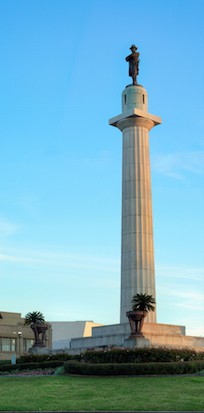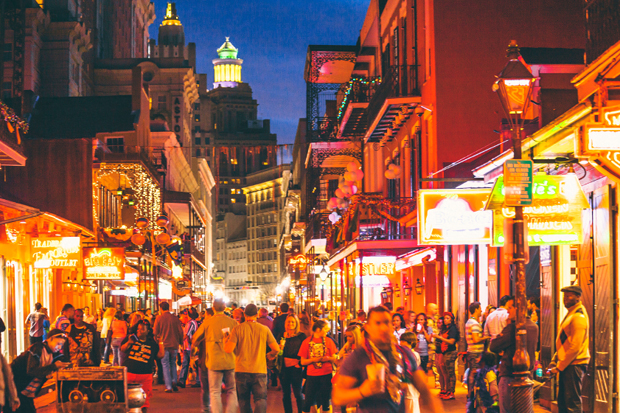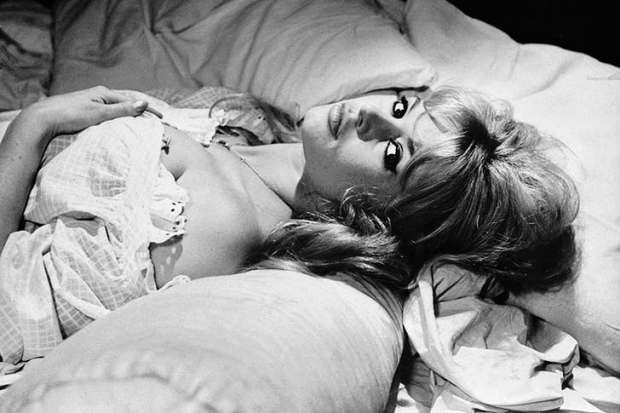The last time I was in New Orleans was during the BP oil spill in the Gulf of Mexico when the city was still also reeling from the effects of Hurricane Katrina. Now it seems to have recovered from these traumas. The restaurants are packed and the picturesque French Quarter, the old heart of the city, throbs to the sound of jazz music in streets blazing with neon lights and crowded with excited fun-seekers.
But things are hardly perfect. The city has one of the highest crime rates in America — well over 100 murders already this year — and even in the Garden District, the city’s most expensive area, full of gracious Victorian villas, the pavements are in such disrepair that they are perilous to walk on. The hostess with whom I have been staying has her arm in a sling after breaking her elbow in a fall. The city council is strapped for cash and cannot afford to re-lay the paving stones that have been forced up from the ground at jagged angles by the swelling roots of the evergreen oak trees.
But there is one large expense on which the mayor has set his heart, and this is the removal of all the monuments to the Southern heroes of the American Civil War — the president of the Confederate States, Jefferson Davis, and two of his most famous military commanders, P.G.T. Beauregard and Robert E. Lee — and renaming the streets named after them.
Lee, of course, was a brilliant general of great personal integrity, whose commitment to reconciliation with the North after the Confederacy’s 1865 defeat in that bloody conflict earned him respect and admiration even among its former enemies. There are many monuments to him throughout the United States, but the grandest by far is the one in New Orleans, a large bronze statue on top of a 60-foot white marble column — barely a third of the height of Nelson’s Column in London but almost as iconic, and central to the city’s annual Mardi Gras celebrations.

But Mayor Mitch Landrieu announced in the summer, as part of a ‘racial reconciliation’ initiative following the 17 June massacre of nine people at a black church in Charleston, South Carolina, in a racist hate crime, that it was an inappropriate symbol of New Orleans today. ‘Symbols really do matter,’ he said. ‘Symbols should reflect really who we are as a people. We have never been a culture, in essence, that revered war rather than peace, division rather than unity.’
Ken Livingstone implied something similar when in 2000, as mayor of London, he called for the removal from Trafalgar Square of the statues of General Sir Charles Napier and Major-General Sir Henry Havelock, though he drew the line at toppling Nelson from his perch. He, too, seemed to believe that statues of military heroes of the British empire were outdated symbols, though his main complaint about Napier and Havelock was that he didn’t know who they were and that he thought — probably rightly — that hardly anyone else did. ‘The people on the plinths in the main square of our capital city should be identifiable to the generality of the population,’ he said.
There’s no such problem with Robert E. Lee. Everyone knows who he is, the military champion of the defeated Southern states that had seceded from the Union to preserve their slave-owning economy. He is hardly a hero for African Americans. But many people, including some blacks, see the mayor’s initiative as an ill-advised attempt to wipe out memories of the most momentous and bloody period in the nation’s domestic history.
There are posters in the Garden District for a group calling itself ‘Save Our Circle’ (this ‘circle’ being the Lee Circle in which the Lee monument stands) which is campaigning against the mayor’s initiative, calling it ‘a divisive move that will and has already divided the entire community’.
‘But most importantly,’ it goes on, ‘the mayor’s focus should be on more pressing issues affecting the city. On the same day he made his intentions clear at the New Orleans City Council meeting, the city reached its 100th murder. Shouldn’t the “monumental” expense to relocate, rename, or remove any of these monuments or street names, or any symbol deemed offensive, be spent more effectively?’ I think so, especially on the pavements.
Got something to add? Join the discussion and comment below.
Get 10 issues for just $10
Subscribe to The Spectator Australia today for the next 10 magazine issues, plus full online access, for just $10.
You might disagree with half of it, but you’ll enjoy reading all of it. Try your first month for free, then just $2 a week for the remainder of your first year.













Comments
Don't miss out
Join the conversation with other Spectator Australia readers. Subscribe to leave a comment.
SUBSCRIBEAlready a subscriber? Log in